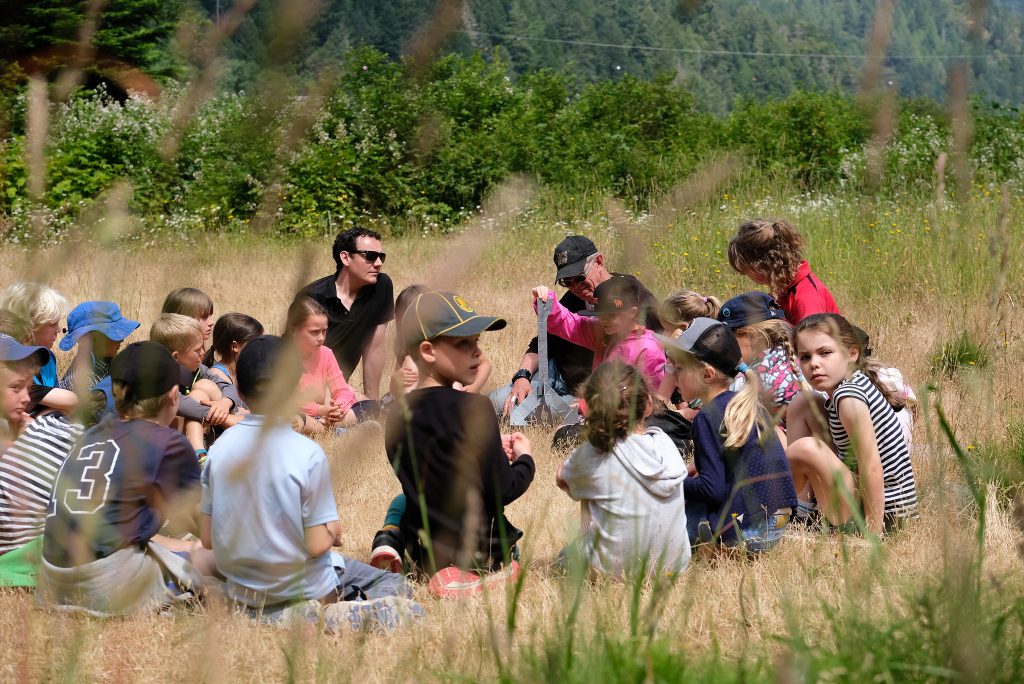11.2 Types of Evaluation
There are two categories of evaluation used In recreation and leisure programming: Formative Evaluation and Summative Evaluation.
Formative Evaluation
Formative evaluation occurs continuously, in an ongoing fashion, while a program or event is happening. Through participant interactions, conversations and direct observation, recreation professionals respond to what they see and hear and make adjustments to the program itinerary (timing) or activities according to this feedback. Ongoing formative evaluation is responsive in nature. It can be used to nip potential problems in the bud and enhance participant enjoyment by making immediate programmatic improvements and changes.
![]()
Examples of Formative Evaluation

Touching Base: The lead programmer at an outdoor education centre periodically touches base (checks in) with the teacher of a 4th-grade class to see whether they are satisfied with the environmental education activities taking place. The conversation allows the programmer to ascertain whether there is more they could be doing to meet the teacher’s curricular goals and learning objectives for the day. The check-in can be as simple as asking the question, “How are things going?” or “Is the day meeting your expectations?” Depending on the teacher’s responses, the programmer can add or take away activities, change the length or breadth of an activity, or reformat an activity to make it more appropriate or inclusive.

Direct Observation: During a physical team building activity, one of the activity leaders observes two youth participants standing off away from their group, looking disengaged and anxious. This observation requires the programmer to get to the heart of the problem and fast! Perhaps the level of participant-to-participant touch required in this activity is too intense and is making these participants uncomfortable. Could it be these participants are standing off as this activity might be too physically demanding for them? After making these determinations, the skilled programmer can subtly implement activity modifications that might foster renewed enthusiasm in the participants and encourage them to re-engage.

Learning about “Plot Twists”: The term ‘plot twist’ refers to any unexpected or unanticipated thing that may require action to be taken and/or pose a potential disruption to the program schedule. For example, the event leader is informed by one of their event staff that the entertainment is going to be 15 minutes late arriving at the venue. This information constitutes a type of formative evaluation and requires a hasty response. Acknowledging news of the delay, the leader quickly and quietly shares this information with each activity leader, asking them to tack on a few extra minutes to their activity to accommodate this unforeseen timing issue.
Ultimately, formative evaluation is a manifestation of Servant Leadership. Bearing in mind that a Servant Leader’s mandate is to serve others, skilled programmers must respond to what they see, hear, learn or perceive – whether through direct observation or participant interactions – and make whatever programmatic adjustments are necessary to ensure the continued enjoyment by each participant, of what is happening around them.
Summative Evaluation
Unlike formative evaluation, which takes place on the fly while a program or event is happening, summative evaluation occurs only after the program or event has ended. Summative evaluation offers programmers an opportunity to get together, sit around a table, and debrief the highlights and lowlights of a given program based on information collected and analyzed after the program has concluded. More often than not, the collected data will provide valuable, crystal clear data and metrics on a program’s successes and failures, strengths and weaknesses, based on a specific set of questions and criteria.
Summative Evaluation Tools
A number of different summative evaluation tools can be used to formally gather data and evaluate recreation-based programs and events. Some tools are qualitative in nature – framing feedback in words instead of numbers – while others are quantitative in nature – looking at numbers and other hard metrics. Some evaluation tools can be a combination of both qualitative and quantitative. Before we dive into a few summative evaluation tools, let’s look at the types of data they collect.

